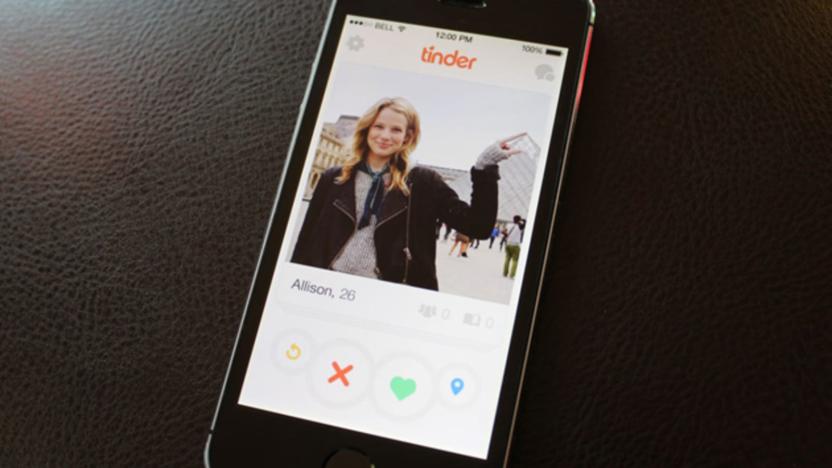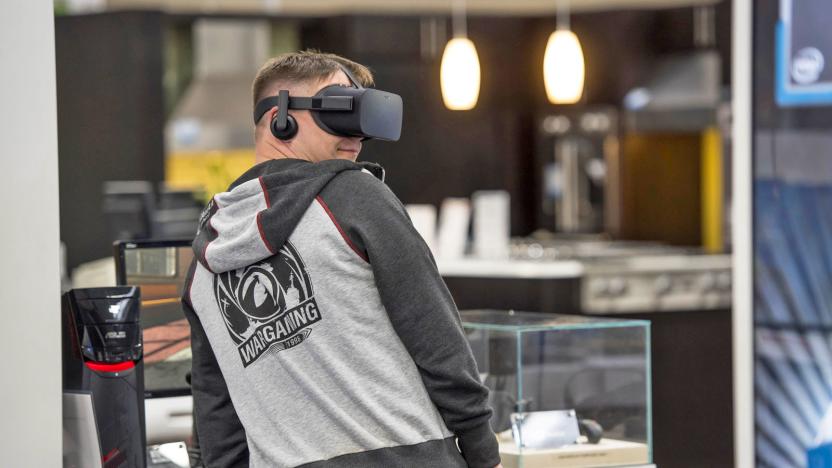Business Insider
Latest

Microsoft has reportedly killed its plans for the HoloLens 3
The future of Microsoft's HoloLens is reportedly uncertain as the company struggles to put together a coherent mixed reality strategy.

Why buy the cow when you can biofabricate the milk for free?
Thought to have been Lord Krishna's favorite animal, the cow has achieved a uniquely sacred status in India. Their slaughter is prohibited through most of the country, beef consumption is largely outlawed as well and woe be the unlucky soul accused of breaking those taboos. In the US, however, that's not the case. We Americans love our cows. We love them so much that we ate a whopping 25.668 billion pounds of beef in 2016, according to the National Cattlemen's Beef Association. There are 93.5 million heads of cattle in this country, but thanks to emerging biofabrication technologies, they could soon be as safe from the slaughterhouse as the cows of Delhi.

Robot caregivers are saving the elderly from lives of loneliness
Relying on 300-pound bear-faced robots to help nursing home residents get out of bed in the morning is much more effective if those folks actually have a reason to get out of bed in the morning. Elderly people dealing with social isolation and loneliness are at increased risk of a variety of ailments, from cardiovascular disease and elevated blood pressure to cognitive deterioration and infection. In short, being old and alone can kill you. But robots aren't just good for improving the elderly's movement, they're surprisingly adept at keeping retirees socially, emotionally and mentally engaged as well.

Tinder just bought a Snapchat-like video app
With Tinder's acquisition of collaborative video messaging app Wheel, the swiping app of choice may soon offer more than photos of available people in your area. Tinder expanded beyond dating last July with the introduction of Tinder Social, which connects groups of friends to hang out. As Business Insider notes, Wheel is similar to Snapchat's "Live Stories," which allows users to post to a public feed of themed videos.

Facebook is closing nearly half of Oculus pop-ups in Best Buy stores
Facebook is shutting down 200 of its 500 Oculus VR pop-up stores from Best Buy locations around the country due, in large part, to underwhelming interest from the public. Per pop-up workers speaking to Business Insider, some of these kiosks would "go days without giving a single demonstration."

Gene Munster predicts! This time, Apple television coming in 2016
For all the fun we Apple bloggers have with Piper Jaffray analyst Gene Munster's insistence that Apple's going to come out with some sort of amazing smart TV, you have to hand it to the man for two things. First, his persistence in believing that dream and second, his ability to go public yet again with a new prediction on when Apple's fabled smart television will appear. Munster first made his prediction at Business Insider's Ignition conference in 2011, and he's been wrong each and every year. Saying that he was "paying penance" for being incorrect on the timing of the mythical device, Munster doubled down on his bet by saying that it will arrive in 2016. He based that prediction on a sudden realization that "Apple takes a long time between products." Based on a market for connected TVs of about 220 million units worldwide, Munster boldly "assumes" that they'll get about 10 percent of the market, or sell 22 million units in the first year. And even better: it's going to cost about US$1,500 or "double a comparable-sized TV". A look at Amazon shows that LED TVs in the 50 - 60 inch range are selling for about $750, so now he's also predicted the size of the unit. Personally, I'm looking forward to the Ignition conference in 2016, when Gene Munster talks about how the Apple smart television will be arriving in 2020... Now, sit back and listen to the man himself:

The iPhone apps you'll never get to use
The App Store has a ridiculous number of apps, but there are some iOS applications that you'll never get a chance to use unless you find yourself employed by Apple. The apps range from a basic space flight game used to check accelerometer function to an internal newspaper app that is used to disseminate company news and info. James Cook at Business Insider has put together a great list of these apps to give you an idea of exactly what you're missing out on. For the most part, the apps aren't anything super special -- it's not like Apple has its own internal version of Clash of Clans it's not sharing with us or anything -- but it's an interesting peak behind the curtain that's worth a read. [Photo via The iPhone Wiki]

Journalist picks up Galaxy S5, discovers it is, indeed, larger than the iPhone 5
In a shocking turn of events that is sure to send ripples through the technology world for years to come, Business Insider's Jim Edwards has confirmed that, as has long been rumored, there are smartphones out there with displays larger than that of the iPhone 5. "Until recently, I was a loyal Apple customer," Edwards writes in a new exposé that is sure to send Apple stock tumbling and iPhone users questioning their faith. Everything changed when he decided to examine something called a Galaxy S5. But what exactly is a Galaxy S5? It turns out it's a smartphone, and not only that, it's made by a company that appears to be completely separate from Apple. Clearly puzzled by the discovery, Edwards pushed the device's power button and found that the screen was actually -- brace yourselves -- larger than the screen of the iPhone 5. "The big screen makes a huge difference," he explains. "When I went back to my old iPhone I was struck by how bizarrely small it is." Indeed. Further testing confirmed Edwards' "Larger Screen" theory, and officials currently estimate the display on the device to be as large as 5.1 inches, though that has yet to be firmly nailed down. Curious as to what such a screen could be useful for, Edwards began testing the Galaxy in a number of ways. "I can actually see my pics once I've taken them now," Edwards claims, referencing his inability to actually view photos on the impossibly tiny 4-inch screen of the iPhone 5. But what about video? Can this so-called Galaxy S5 play those as well? Edwards claims it can. "On the Galaxy, video just plays." That sounds pretty slick, especially once Edwards reminds us what video is like on the diminutive iPhone. "First you can't see anything because the screen is small," he once again notes, puzzled as to why Apple would even bother putting such a minuscule display on a smartphone. "Instead of just playing the video on the screen, the background goes black and then the video boots up in full-screen mode. The experience is... OK." A shocking account. Edwards clearly has Apple's number here. Why would anyone want to watch a video on the entire screen? It's a pointless feature. Obviously, if you have a big-screen gadget like Edwards' new Galaxy S5, you'll surely want to use the massive display real estate to watch videos in a tiny window embedded on a mobile web page. For Apple to just assume we want to watch the videos in as large a format as possible is presumptuous, and, if I can speak personally here, a bit insulting. He goes on to speak of something called "Swype," but as he accurately points out, "iPhone users have no idea what this is." He's right, and frankly I have to admit that I didn't even understand this part of his article because it literally blew my mind. "You swish your fingers across the board instead of pecking out letters one by one." I don't even know how to process that level of majestic amazingness. To wrap things up, Edwards brings things back to the key point of it all -- which we never really left to begin with -- and that's the fact that the Galaxy S5 is, again (again, again... again) bigger than the iPhone 5. "Size matters," he says succinctly. Quite. "The Galaxy S5 isn't perfect, but it's probably better than Apple's iPhone are right now," Edwards adds at the very end. I don't really think he's giving himself enough credit here. "Probably better" is the understatement of the century. Clearly Samsung is prepared to dominate Apple's smartphone business in every conceivable way once Edwards' discovery of the larger screen hits the mainstream. Years from now, when electronics archeologists look back on when smartphones really evolved, we'll remember the day that Jim Edwards discovered the Galaxy S5 and showed us all the light.

The TUAW Daily Update Podcast for May 2, 2014
It's the TUAW Daily Update, your source for Apple news in a convenient audio format. You'll get some the top Apple stories of the day in three to five minutes for a quick review of what's happening in the Apple world. You can listen to today's Apple stories by clicking the player at the top of the page. The Daily Update has been moved to a new podcast host in the past few days. Current listeners should delete the old podcast subscription and subscribe to the new feed in the iTunes Store here.

A WWDC keynote would be the longest gap between events ever
Jay Yarow's done the homework and determined that if Apple takes the stage as expected at WWDC, it'll be 230 days from the last big Apple event. That would make this the longest wait for a new Apple event ever, at least since the iPad's launch in 2010. The previous record was 132 days between the launch of the MacBook Air and the iPad 2, so this wait trumps that by at least three months. Yarow cites that wait over at Business Insider for the recent drop in Apple's stock price, and indeed, you can see on the line above that Apple's stock does seem to line up to the reveal events. But there are a lot of factors going into that stock price. The difference in event timing could just be attributed to CEO Tim Cook -- as Yarow notes, he's a very different person from Steve Jobs. Cook has suggested that the company could be a little more careful about new product releases, in order to line up more sales when the release actually arrives. Whatever the reason, it seems very likely that Apple will host an event at WWDC in June, if not before. It's unknown if that event will feature new hardware. Usually Apple uses the WWDC event to show off new version of iOS and OS X. But considering the wait, it seems likely Apple has something to show us.

AppGratis document shows disconnect between statement and promotion
Today's edition of "How the AppGratis Turns" finds Business Insider reporting on a "leaked document" showing that the company supplies developers with estimates on where their app will land in the App Store rankings based on how much they're willing to spend. This contradicts what AppGratis CEO Simon Dawlat stated yesterday to TUAW sister site TechCrunch. In Dawlat's statement, he said that "We've never been in the business of gaming the top charts or anything." Business Insider contacted Dawlat about a chart they received showing that an approximately US$100,000 buy with AppGratis would place an app in the top five in the US App Store; something that BI considers to be at odds with what Dawlat said. Dawlat took a look at the chart published by BI and replied that "Today, mobile-media buying is this simple equation where the biggest industry players will acquire a certain number of installs through guys like AppGratis, Facebook Mobile Ads, Apple's iAd and all the other guys in order to reach their ranking objective." In other words, what Dawlat thinks is business as usual in the mobile app-marketing world is what Business Insider and Apple appear to see as disrupting the system. AllThingsD featured a guest post by former OMGPOP CEO Dan Porter last week in which he said that App Store rankings are so important to Apple that the company strives to keep them fair and democratic. Apps like AppGratis are seen as artificially inflating rankings based on how much a developer is willing to pay, totally at odds with Apple's goals and probably what lead to the current AppGratis ban. Well-known iOS developer David Barnard of App Cubby (@drbarnard) tweeted earlier today that "I don't get why BI and people linking to it make that chart out to be a bad thing or inconsistent with statements" made by Dawlat. Barnard noted that "many developers buy ads on launch day to help get that traction" in the App Store, essentially gaming the App Store rankings as well. Ads in the Facebook iOS app highlight a variety of apps that are for sale in the App Store. Will Facebook eventually face the wrath of Apple's iOS developer guidelines? Guideline 2.25 states that, "Apps that display apps other than your own for purchase or promotion in a manner similar to or confusing with the App Store will be rejected." How Apple interprets and applies that guideline to apps other than AppGratis that are also used to promote apps needs to be clarified quickly. For further details on this continuing story, a look at the previous posts about AppGratis is a good way to get some background.

How the iPhone surprise was almost given away by Steve Jobs
Apple's curtain of secrecy surrounding new products is almost legendary, but a former Apple employee passed along a story to Business Insider's Seth Fiegerman about how the secret of the iPhone was almost revealed to the world -- by Steve Jobs. The setting for the story was at the house of Steve Jobs in early 2007, described by the employee as "a no man's land for WiFi, with thick walls." The iPhone team was trying to debug issues with Wi-Fi on an early build of the device, and finally went to Jobs' house to figure out what was happening. As the team began to debug the issue, "this crazy ass medieval buzzer starts going off and startles us, and even startles Steve. He quickly figured out it was coming from the pedestrian gate on the other side of his house." The story continues -- "Up walks the happiest FedEx guy you have ever seen, coming up to the door. It's not Steve's normal guy, which is why he was surprised. So Steve goes out to meet him because he has to sign for this package, but he's got the iPhone in one of his hands. Steve just walks out casually, drops the phone behind his back, signs the package, and the FedEx dude marches off." The Apple employee explains that "when we carried the phones to his house, we carried them in these Pelican lock boxes. These phones were never to leave Apple's campus, and Steve just casually throws it behind his back. That was the first time I saw someone casually come close to seeing the iPhone before it was announced, and he didn't even know it. If the FedEx guy had just tilted his head, he would have seen it." It's not quite as good a story as leaving an iPhone prototype in a bar, but almost. #next_pages_container { width: 5px; hight: 5px; position: absolute; top: -100px; left: -100px; z-index: 2147483647 !important; } #next_pages_container { width: 5px; hight: 5px; position: absolute; top: -100px; left: -100px; z-index: 2147483647 !important; }

Video of Siri working perfectly for users with a variety of accents
Are you excited about Siri? If so, this video on Stuff.tv is going to knock your socks off. In the video, users ask Siri to open a website, send an IM to someone, ask it about the weather both locally and in San Francisco, set an alarm, do some currency conversions, and find the distance to the Moon. Be sure to watch the end of the video, where a young woman asks "Is it going to rain tomorrow?" and Siri responds with "Looking at London weather, it doesn't look like it's going to rain tomorrow." It's obvious in the video that the users switch between the English-US and English-UK settings, as Siri's accent goes between American and British depending on the speaker. In every case, Siri provides a correct answer and does an amazing job of taking dictation. When Siri isn't exactly sure, it responds "This might answer your question." It certainly works much better than this voice recognition. I ... can't ... wait!

Apple's Ping among Business Insider's tech flops of 2010
Business Insider lists Ping among the 15 biggest flops in tech for 2010. The reason for this listing is that Ping was launched with a great deal of publicity, but it still hasn't gained much of a foothold in the hearts and minds of its users. Business Insider cites the reminder mail about Ping, sent earlier this month, as evidence that Ping has failed. I'm not sure there's anyone jumping up and down about what a crazy, unbelievable success Ping has been, but the service has only been around since September. I don't think three months is enough time to count Apple out of the social network game, especially when we know they're still working to smooth things out with Facebook. While Ping hasn't set the world on fire in 2010, here's hoping it gets some traction and real motion in 2011.

iPad owners' usage increasing over time
Business Insider recently surveyed 500 iPad users about their habits with some interesting results. Among the most interesting is that nearly 80 percent of respondents (77.6) said they use their iPads more often now than they did when they first got them, suggesting that, after the novelty had worn off, customers continued to use their iPads. Even more so, in fact. The study also found that 71 percent of participants use their iPads between one and five hours per day. Additionally, 28.9 percent said that their iPad has become their primary computer. Personally, I use mine as a supplement, but my wife hasn't touched our MacBook Pro since the iPad came home. Most participants reported spending the bulk of their iPad time browsing the Web (37.7 percent) while 39.4 percent claim to have downloaded between 20 and 50 apps (most people paid for about 10 apps). There's more, of course, which you can read here. It's an interesting study with a decent-sized sample.

WSJ says iPads gaining acceptance in corporations
The past few weeks have been fascinating for Apple watchers. The business press has been reporting that the brand, formerly a pariah in the buttoned-down world of corporate IT, is now being accepted with open arms. We had a story yesterday about the growth of Mac sales in the government and enterprise markets, and now the Wall Street Journal is reporting on how the iPad is finding a home in the business world. In the WSJ Tech piece, reporter Ben Worthen notes how the iPhone was banned by companies when it first came out in 2007 for being inappropriate for the workplace. The iPad, however, has been quickly embraced by companies. One such success story cited in the WSJ piece talks about Chicago-based law firm Sonnenschein Nath & Rosenthal LLP. The company pre-ordered 10 iPads prior to the release of the device in April so that they could learn how iPads could be used with the company's internal systems. The technology department at the firm now supports more than 50 attorneys with iPads, and they plan on issuing iPads as a less-expensive alternative to laptops soon.

BusinessInsider insists Android is the new Windows. Again.
There's an old saying, "When all you have is a hammer, every problem looks like a nail." For Henry Blodget of Business Insider, perhaps we should change it to "When all you have is a comparison between Windows and Mac OS from the 1980s, every situation looks like a repeat." In an article entitled Hey, Apple, Wake Up from January 5th, 2010, Mr. Blodget compared the "iPhone vs Android" market to "Mac OS vs Windows" of the 1980s. I missed the article the first time, but that turns out to be OK because 6 months later (almost to the day) he's written the same article again, but this time with a chart! Featuring a headline that couldn't be any more link-baiting if it included LeBron James' free agency choice or Lindsay Lohan's ice cream card, This Android Chart Should Scare the Bejesus Out of Apple rehashes what is almost exactly the same article ("NEW AND IMPROVED! NOW CONTAINS REFERENCES TO THE iPad!") and ends with a chart showing "Percent Of Developers That Have Developed For Each Mobile Platform" showing Android in the lead over iPhone/iOS. The body of the article links not once but twice to his previous article, plus a callout box to his previous article (which also links to another article about the same chart), and at the end of the article, in case you missed it, there is a "See Also" link which will bring you back to -- wait for it -- the same article he wrote back in January. Memo to H. Blodget: Saying the same thing over and over again does not automagically grant it the mantle of truth.

Gene Munster: 2010 is the "Year of the Mac," sales up significantly
When Gene Munster talks, people listen. The Piper Jaffray analyst delivered one of his missives this morning stating that his analysis of Mac retail sales in the U.S., based on numbers tracked by NPD Group, are up about 26% year-over-year for the December quarter. This is higher than the average Wall Street estimate of 19% year-over-year growth. What does that mean in terms of units sold? Munster, who is not pictured at right, believes that translates to about 3.1 million Macs sold in the U.S. last quarter. Munster's last estimate was for Apple to sell around 2.9 million Macs, so even his own estimates are turning out to be somewhat conservative. Munster believes that Street estimates for 2010 will need to come up. The Street shows about 14% year-over-year growth in Mac sales this year, which is well below the 20% or so growth that Apple is demonstrating. In his note, Munster wrote that "2010 is shaping up to be the year of the Mac." Munster concluded his note with a statement that he's confident in his estimate of 9.3 million iPhone shipments last quarter. We'll all find out for sure on Monday, when Apple reports the actual December quarter results. We'll liveblog the financial fun right here on TUAW, so stay tuned next week. [via Business Insider]






